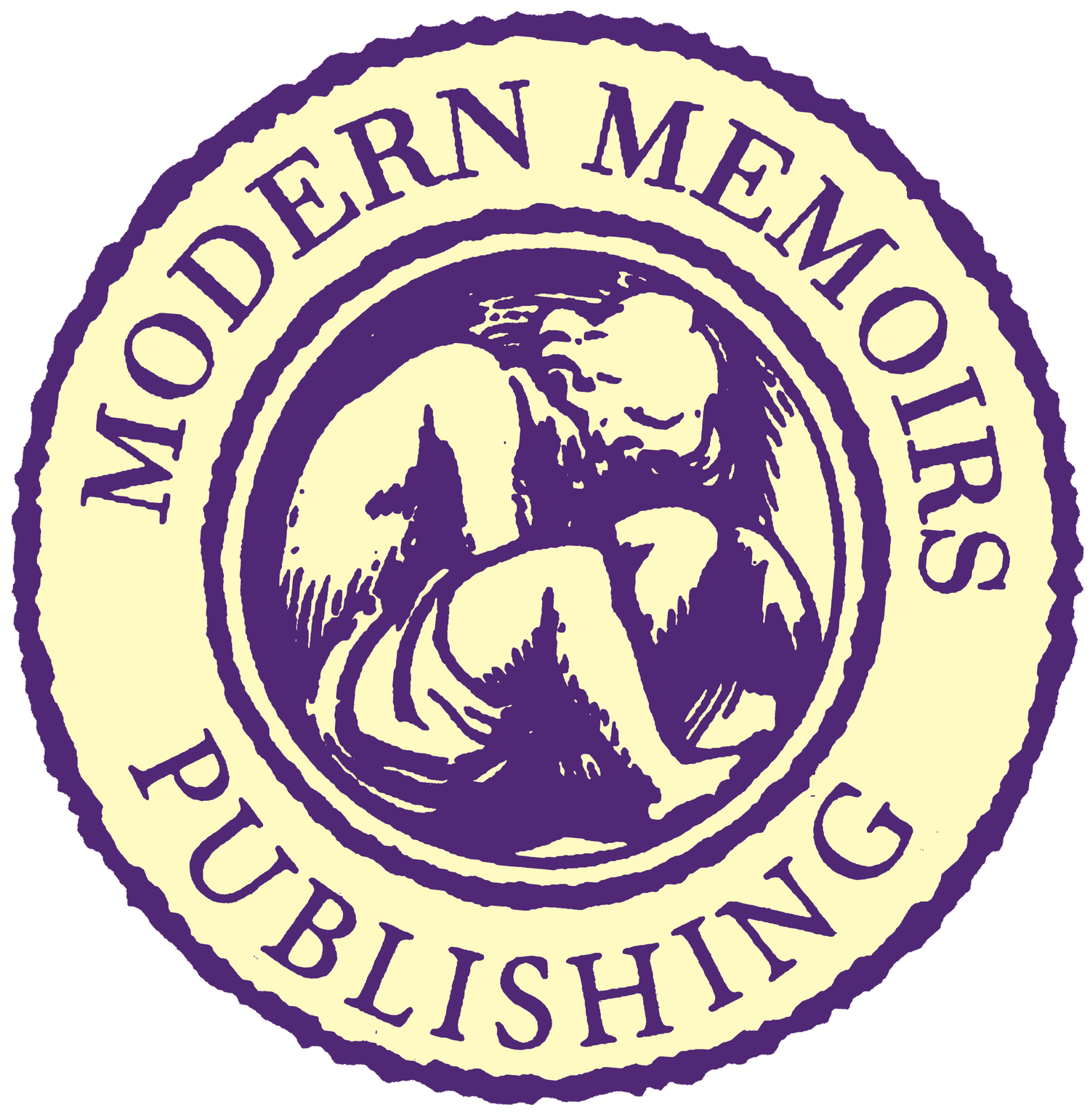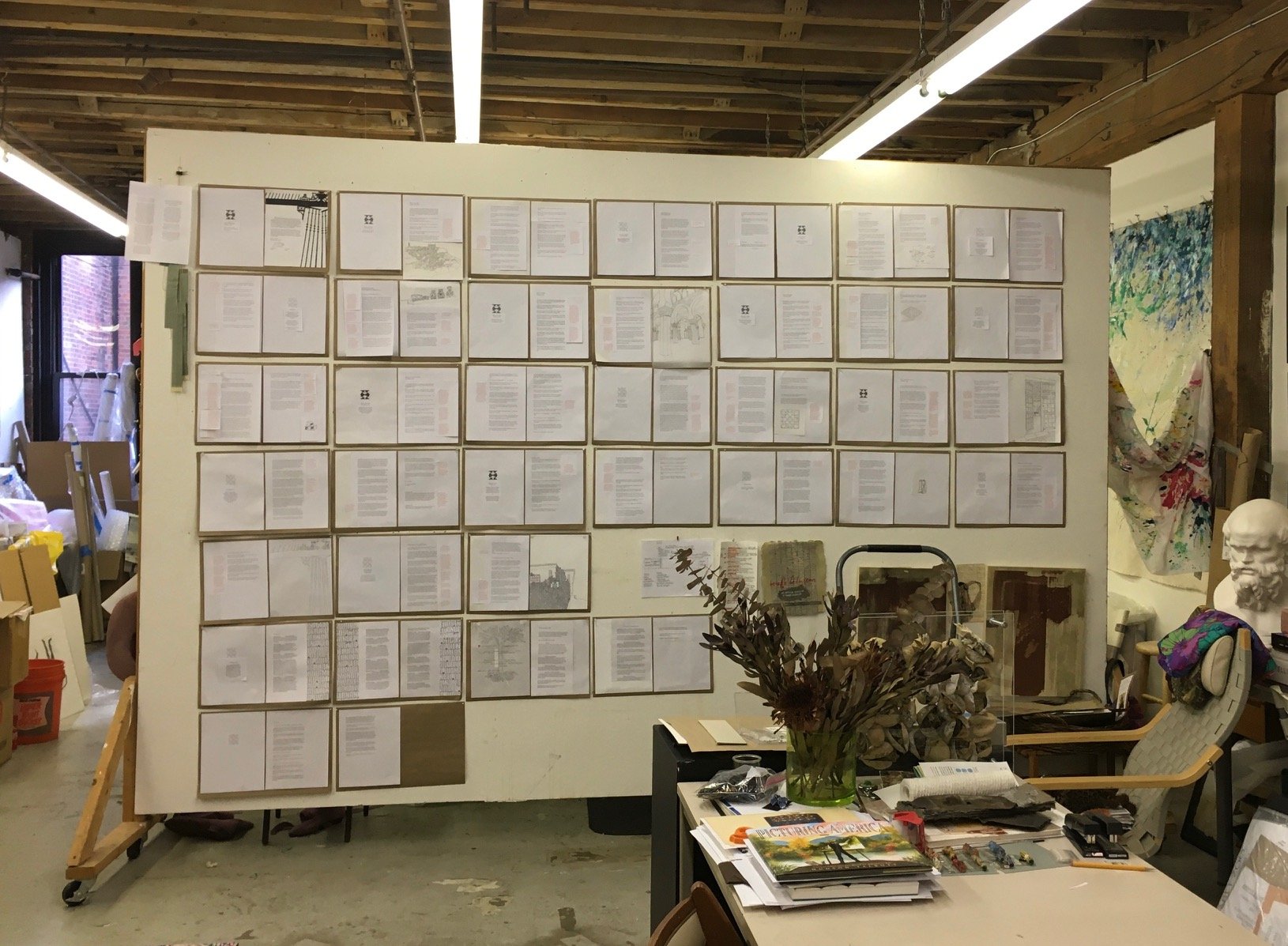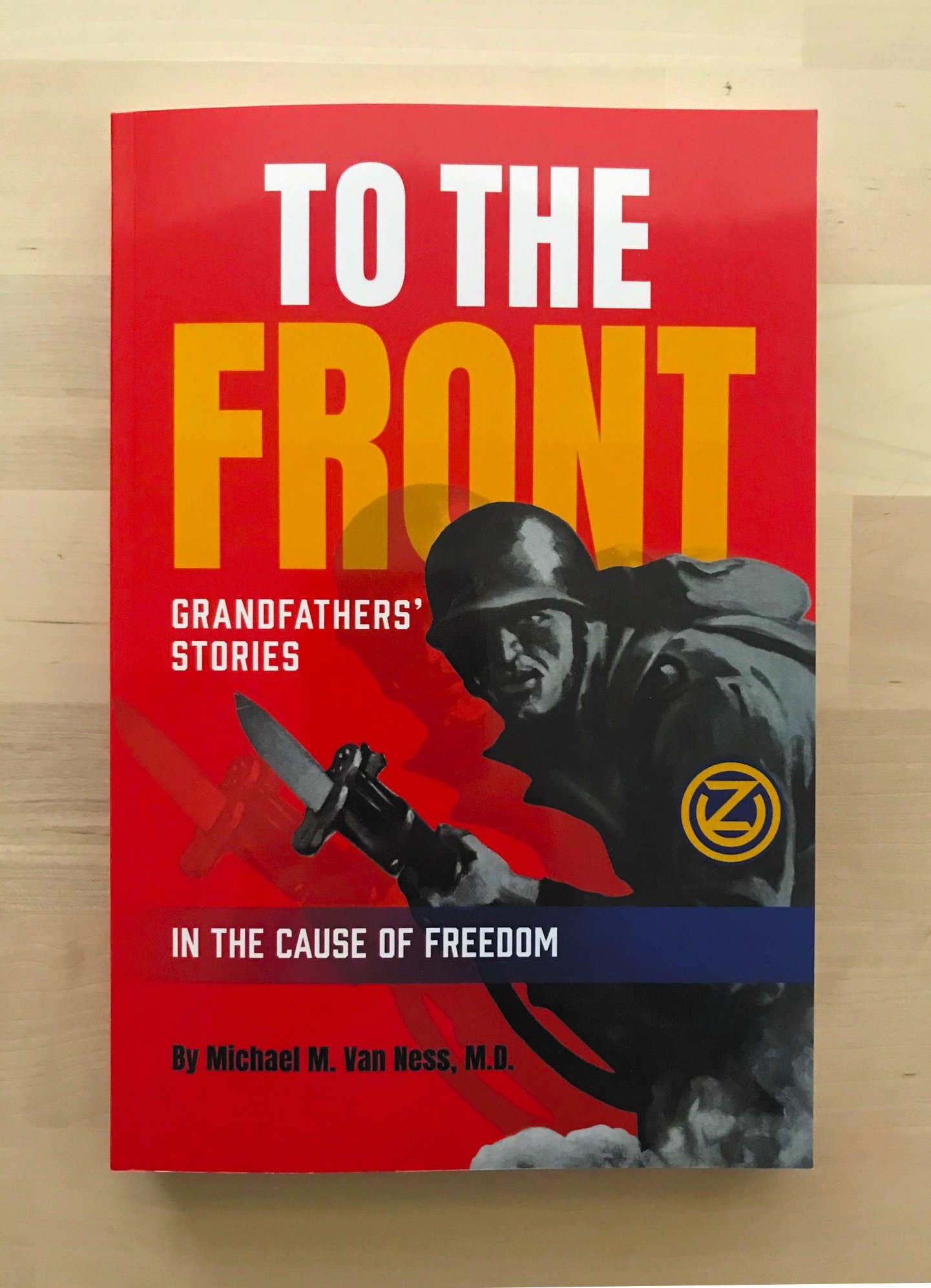Ellen Kanner and Annie Zeybekoglu published their book entitled I, Teresa de Lucena: Reflections on the Trial of a Conversa with Modern Memoirs in 2022. For Modern Memoirs, this unique microhistory project, which features translations and text by Kanner and book design and illustrations by Zeybekoglu, took one year from the day the duo first contacted us to the day the books arrived on their doorsteps. We asked Kanner and Zeybekoglu to reflect on what the publication process was like for them, and what it has meant to share their book with others.
Ellen Kanner and Annie Zeybekoglu working on their book, I, Teresa de Lucena: Reflections on the Trial of a Conversa
1. Through primary sources, your book tells the story of Teresa de Lucena (1467–1545), who was born in Toledo, Spain and faced the Spanish Inquisition twice. How did you uncover Teresa’s story in the first place, Ellen, and what inspired you to pursue it?
Ellen Kanner: Teresa de Lucena first appeared to me as a footnote in a book I was reading about the Spanish Inquisition. The reference numbers that locate her trial in the Inquisition archives caught my eye, but most of all, I recall thinking, “I bet there’s a story there.” What inspired me to pursue Teresa’s story for the next forty years is harder to describe. My passion for Spain and intellectual curiosity kept me moving forward, but what continues to inspire me is the realization that in ways large and small, understanding Teresa’s life helps me to understand my own. For example, as I watched Teresa’s relationships with family and friends unfold, it gave me cause to reflect on mine. And in order to finish writing the book, I found inspiration in Teresa’s strength and perseverance.
2. How was your research complicated by issues of transcription and translation?
Ellen Kanner: Setting out to research Teresa’s life, I had no idea where the journey would lead. The first step was obvious: a trip to Madrid to obtain a copy of her sixteenth-century trial dossier from the vast National Historical Archives. I’ll never forget the thrill of holding the original parchment pages in my hands—a sensation followed almost immediately by the crushing realization that I could not read the old handwriting. Using a partial transcription published by a scholar in 1902, I taught myself to decipher the handwriting. Then I transcribed the documents in Spanish, translated them into English, and only then, created a timeline and a system to cross-reference the 101 people mentioned in her documents.
3. At your book launch in Lexington, Massachusetts in October, Ellen talked about history as viewed through two lenses: a telescope and a microscope. What do you mean by this concept, and how does it relate to your project?
Ellen Kanner: I, Teresa de Lucena is a work of microhistory, a genre that puts the individual at the center of the narrative and then zooms out to create the larger context of her life and times. My intention was to tell Teresa’s story as accurately as possible based on the information revealed in her trial documents. I wanted to understand the details of her life—Where did she live? How old was she when her father fled? Who were the witnesses against her? And this required examining her life in minute detail—as if under a microscope. By contrast, most history is the story of events seen from afar—as if through a telescope. The far view makes it possible to count things, like the stars in the sky or the number of people condemned for heresy in a given city, but it doesn’t give you a sense of what a real person experienced who was living at the time.
4. The book’s design and illustrations are as integral to the power of the book as its text. What were the goals that you set out to achieve visually, Annie? And how did you collaborate with Ellen to achieve those goals?
“The wall” in Annie’s studio, on which Ellen and Annie storyboarded the book in two-page spreads
Santa Maria la Blanca (formerly Ibn Shushan Synagogue), Toledo, Spain, illustrated by Annie Zeybekoglu
Annie Zeybekoglu: We set out to create a book to honor Teresa that was both beautiful and accessible. Ellen’s writing and my design and illustrations evolved together, in support of our decision to focus on the trial and to have Teresa speak in her own voice. I knew there had to be plenty of “air” to help readers decipher the complex narrative, and that we needed to create a format that would help readers know where they were in the trial. Early on we also decided to put Ellen’s research and reflections in sidebars instead of at the bottom as footnotes. Our design decisions, including where to put the sidebars and the illustrations, were meant to evoke an old manuscript. We storyboarded the book on a large wall in my studio in two-page spreads which helped us to see how the trial and evidence flowed and to determine where to place the illustrations.
Ellen, is there anything you would like to add to Annie’s account?
Ellen Kanner: Annie and I were classmates at Smith College, and when I arrived at her studio in 2018 with my translations and research, I already knew I greatly admired her design sense and book experience from other projects we had worked on together over the years. The true gift of working with Annie on I, Teresa de Lucena was the degree to which the design shaped the text and the text shaped the design. I think it’s fair to say our collaboration shows, and that ultimately we found a way to allow Teresa to speak for herself.
5. Your book is available for sale through a Modern Memoirs printer affiliate in an arrangement we set up for you. What drew you to work with Modern Memoirs, as opposed to a commercial publisher? What target audiences do you hope to reach? And can you share any initial reader feedback?
Ellen Kanner: Since Annie and I see the content and the design for the book as inextricably linked—the yin and yang of the reader’s experience, as it were, we were determined to find a publisher who would allow us to stay true to our vision. With that in mind, two friends from Smith referred us to Modern Memoirs, Inc. We brought a very detailed mock-up of the book to our first meeting with Megan and Ali, and when Megan declared, “This is an archivist’s dream,” we knew we had found the right home for Teresa.
From reader feedback, we know that Teresa’s story has moved some people to tears; others have commented on the book’s cultural and religious content. Many have noted how Teresa’s story resonates today, bringing issues like multiculturalism, racial intolerance, and antisemitism into the twenty-first century.
Annie Zeybekoglu: We’re fascinated that every reader we’ve heard from has had their own personal experience with Teresa’s story. As Ellen says: “We set out to create a book about Teresa de Lucena and it seems we created a mirror.”
Interested in reading more? Readers can purchase Kanner and Zeybekoglu’s book at the link below:
Left to right: Megan St. Marie, Annie Zeybekoglu, Ellen Kanner, and Liz Sonnenberg at the book launch for I, Teresa de Lucena: Reflections on the Trial of a Conversa, hosted by Lexington (Massachusetts) Community Education, October 17, 2022
















